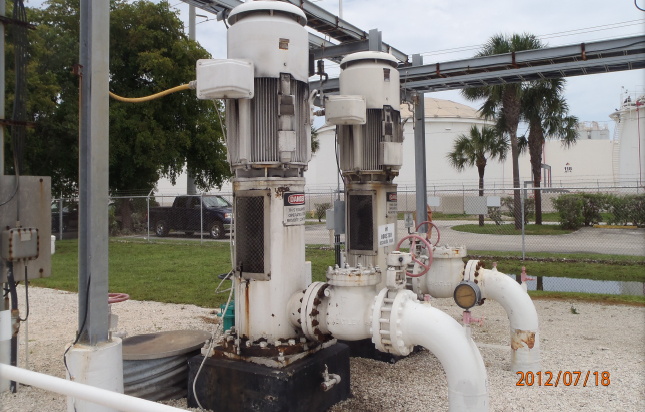

An Opportunity to Expand
When Buckeye Partners saw an opportunity to expand their capacity of jet fuel pumping to airports in the Miami/Ft. Lauderdale area, they reached out to S. T. Hudson for help. Their active pump station was already supplying oil via direct pipelines, but expansion put a new business opportunity on the horizon. The increased throughput would not only result in additional revenue for Buckeye, but would also support a less obtrusive means of transport via pipeline.

Project Goals
For Buckeye Partners, the more oil they move, the more revenue they see. So when the opportunity to upgrade and broaden their jet fuel pumping capacity arose, they jumped into action. Their main goals for the Port Everglades project were to:
Seize a New Business Opportunity
While Buckeye Partners were already utilizing their pipelines to transport fuel to both airports, expanding and making upgrades would allow for even more opportunities to transport fuel as well as work with partner companies.
Expand Capacity for Jet Fuel Pumping
To allow for additional capacity, the project involved both expanding existing pipelines as well as delivering upgrades that would enhance performance.
Key Upgrades & Additions
1
New Meter Station
250
Horsepower
Vertical Deep Well Pump
1
4160-480 Volt
Transformer for 250HP Motor
10
MOVs
Project Overview
Pipeline company Buckeye Partners makes money by transporting oil products, including crude, fuel, and diesel, through their pipelines — from their own tanks to their customers’ tanks, or from other people’s tanks and ships to various customers. To expedite their throughput, S. T. Hudson worked with Buckeye to expand and upgrade their jet fuel pumping abilities in Port Everglades, a venture that would better serve area airports and increase profits.
With a vast 6,000 miles of pipeline, Buckeye Partners is one of the largest independent liquid petroleum products pipeline operators in the U.S. Having worked with S. T. Hudson on several additional products, Buckeye was adequately familiar with the company’s capabilities. The Port Everglades project had a quick timeline and strict commercial deadlines, necessitating a high level of expertise and professionalism. Due to their past positive experiences, Buckeye trusted S. T. Hudson’s ability to deliver results quickly and efficiently.
Once the scope was established, the project was fully underway. The S. T. Hudson team set out for the Miami/Ft. Lauderdale area to assess the current setup and get accurate pictures and measurements. Using S. T. Hudson’s advanced laser scanning technology, the team was able to gather the data they needed, creating detailed, 3D digital pictures that they would later use to generate a 3D model. This provided the S. T. Hudson team with remote access to real-time data, eliminating the need to return to the site to make measurements.
Over the course of just a few months, the S. T. Hudson team took several actions to improve the pump station jet fuel transfer in Port Everglades, including removing a pumping station bottleneck, which allowed Buckeye to transfer jet fuel to FLL and MIA simultaneously, installing a dedicated booster pump and custody transfer meter, and modifying the shipper manifold at the Buckeye Port Everglades Pump Station. Together, these improvements served to increase jet fuel pumping rates for two airports that are integral to travel in the South Florida area.
Project Highlights
Team
- Navigated roadblocks with ease: when discovering previously undetected piping once they started digging, the S. T. Hudson team managed to update the design quickly and without delay, helping the project stay on track. Today, S. T. Hudson uses ground-penetrating radar, which would prevent this issue.
Equipment
- Installed new 250 HP vertical deep well pump
- Installed new Coriolis custody transfer meter
Instrumentation/Electrical
- Tied into spare breaker on 4160 bus
- Installed new pad-mounted 4160-480V transformer for 250HP motor
- Built new meter station with Coriolis meter, temp/pressure transmitters, and signal wiring to control system
- Integrated variable frequency drive into the existing control system
- Installed suction & discharge pressure transmitters
Piping
- Installed 10 MOVs and modify existing manifold
- Added piping tie-in from manifold to booster pump
- Installed underground piping from booster pump to new meter station
- Installed underground piping from meter station to existing Buckeye pig station and tied in piping





